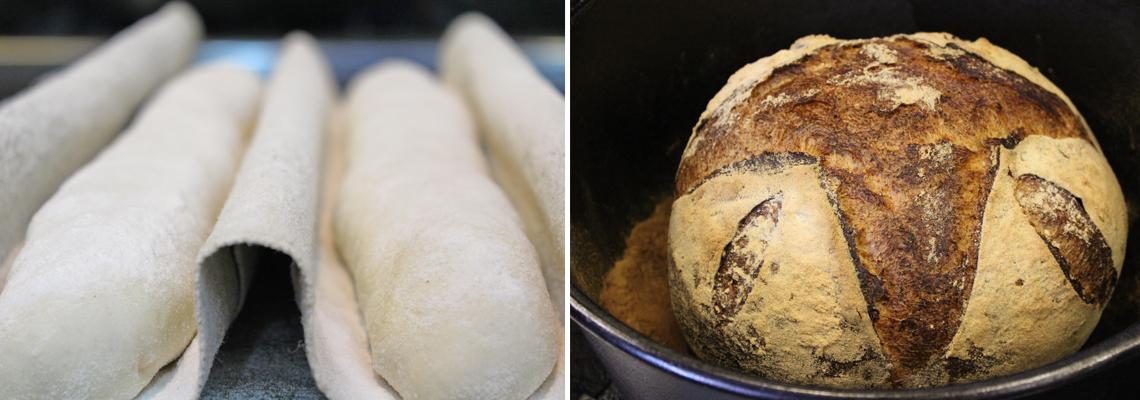In this episode of The Stella Culinary School Podcast we discuss the twelve steps of the bread baking process. Whether you're new to bread baking or an old pro, this podcast is extremely important for building a foundation in excellent bread baking technique.
- Scaling Ingredients
- Mixing and Kneading
- Primary or "Bulk" Fermentation
- Punching or "Degasing"
- Dividing
- Rounding or "Pre-forming"
- Benching or "Resting"
- Final Forming / Panning
- Proofing (Secondary Fermentation)
- Baking
- Cooling
- Storing
These twelve steps are the foundation on which all baking knowledge is built. If you're an aspiring bread baker, it's important you first understand the finer points of each of these steps.
Details
Download & Listen To More Episodes
The Stella Culinary School Podcast is our core curriculum and the most effective method to gain knowledge and take your cooking to the next level. You can view and listen to all episodes by visiting the Stella Culinary School Podcast Index.
Subscribe to Podcast
There are 10 Comments

Thanks Nina. Glad you enjoyed
Thanks Nina. Glad you enjoyed the podcast, it was way over-due. I was out of practice and had to re-record this episode 3 times before I was even somewhat happy with it. Finally I just had to say "good enough is good enough" and hit the publish button. The next episode will come much more quickly, hopefully allowing me to create some momentum.
Jacob. Listened to it
Jacob.
Listened to it tonight and really enjoyed it. Put everything I have been learning from you and others in one place. I can tell you really wanted to go off on a "pizza rant" and were able to successfully contain yourself.![]()
I cant wait for that episode and more.

Yes, I love the pizza. I
Yes, I love the pizza. I think that's how we're going to end the bread series. I really can't wait, but I think it will be beneficial for everyone to understand some of the other techniques in bread baking before I start geeking out on pizza.
Glad you enjoyed the podcast.
Loved the Podcast! Keep on
Loved the Podcast!
Keep on baking!
I love pizza, I make at least eight (8) different styles! Can't wait...

Thanks Limey. Looking forward
Thanks Limey. Looking forward to geeking out on pizza in a few more episodes.

During fermentation you can
During fermentation you can insert a probe thermometer into your dough to check the internal temperature. Most books will recommend that the dough have an internal temp of high 70s to low 80s Fahrenheit. Instead of doing complex calculations, if you feel your dough isn't proofing correctly in your environment, then just take the temperature of your water before mixing and then the temperature of your dough about 20 minutes into fermentation. If your dough temp seems a little low, or if your bread is proofing too fast, you can simply adjust the water temp next time around.
I don't overly concern myself with the dough temperature. Just pay attention to the visual cues that dough gives you in your environment and adjust accordingly.

Glad I was able to help. The
Glad I was able to help. The autolyse step is commonly overlooked but an important part of the bread making process.





